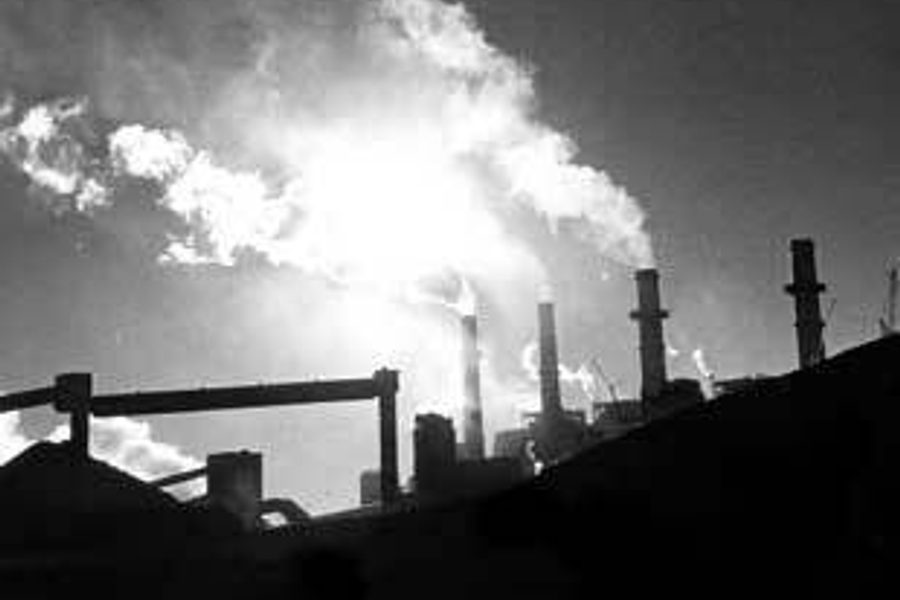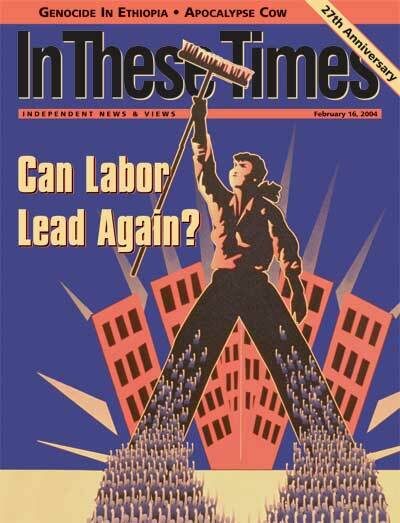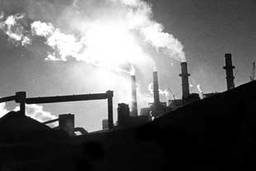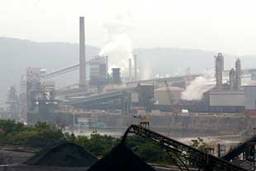
A vote for exploration of Alaska’s National Wildlife Reserve is a vote for environmental responsibility, Jerry Hood, Local Alaska Teamsters leader, said on July 31, 2001.
When the Teamsters announced support for drilling in the Arctic National Wildlife Refuge (ANWR) to create jobs, many commentators claimed that the nadir of the relationship between environmentalists and the labor movement was reached. Halting drilling in ANWR is the No. 1 defensive priority of the largest environmental organizations in the country, and creating new jobs is the top priority for many labor unions.
This public rift was exactly what the Bush administration sought.
Republicans understand the importance of finding wedge issues between labor and the environment, given the roughly 16 million union members in the United States and the 11 million or so members of environmental organizations. If these two groups joined together to support an agenda for working families that included ecological protection, the president is well aware he could find himself out of a job.
The right has historically and famously exploited obvious cultural differences between the movements to undermine a unified progressive agenda: Environmental organizations are largely inhabited by upper-class whites with post-graduate education, while labor appeals to more diverse blue-collar interests. And this divisive tactic resonates most effectively during bad economic times—which, not surprisingly, this Republican agenda creates.
Yet, an alliance should be a natural outcropping of these two groups. Not only are their memberships consistently more liberal than the rest of the public on social issues and support a strong role for federal involvement in restraining corporate greed, but recent research by renowned economist Ray Perryman demonstrates that protecting the environment has a positive impact on jobs and job creation.
Although labor and environmental groups have partnered in the past to enact critical legislation—support by the Steelworkers was crucial to passage of the Clean Air Act of 1970, for instance—a portion of the blame for Republicans’ success nonetheless falls on the movements themselves.
“Trade unionists get so concerned with protecting jobs that are right there that they don’t look at how many jobs get created by cleaning up and preventing polluting activity,” says Al Zack, veteran leader of the United Food and Commercial Workers.
Bracken Hendricks, executive director of the Apollo Alliance, a labor-environment partnership calling for a $300 billion investment in clean-energy jobs, says environmental leaders, too, have done a lousy job explaining how solid environmental policies have long-term benefits to everyone—including those outside the movement. “I think the environmental movement has made the assumption that people understand their goals and issues and will therefore be willing to sacrifice for them,” Hendricks says. “I don’t think the environmental community has done a good enough job of making it clear how environmental issues really are issues of social justice, unfair burdens and real costs to real people.”
The result, says Joel Rogers, director of the Center on Wisconsin Strategy—an institute that supports initiatives that are good for workers and the environment—is that “workers are treated like road kill and the environment is treated like a sewer.”
Recent events, however, demonstrate that such rifts are getting more difficult to create—even during bad economic times.
A majority of labor unions didn’t join with the Teamsters in backing the president’s energy initiative that included drilling in ANWR. Leadership against the measure was particularly strong from Leo Gerard, president of the Steelworkers, and Andy Stern, president of Service Employees International Union (SEIU). And environmentalists and unionists have joined together in battling issues of globalization—most spectacularly during the 1999 World Trade Organization protests in Seattle where members of both groups were attacked equally by an out-of-control police force. The empathy that moment created came to bear last year during FTAA protests in Miami, in which police efforts to divide the groups again were unsuccessful.
“There are always going to be breaks on issues like the Arctic National Wildlife Refuge,” Zack says. “The fact that labor didn’t follow the Teamsters in lockstep is a tribute to the labor movement.”
Among the best-known efforts to build a labor-environmental coalition began when AFL-CIO President John Sweeney took charge in 1995. He understood that labor needed support of environmentalists to pass his working families agenda and quickly convened a high-level dialogue involving heads of the two movements.
The discussion ended up focusing on the Kyoto Accords on global warming, the major issue on the environmental agenda at that time. Sweeney appointed Jane Perkins to front the effort. She was an obvious choice: Perkins was former president of Friends of the Earth and a former business agent for SEIU.
In retrospect, the focus on climate change may have been the wrong initial effort for this group. While many environmental issues have clear benefits for job creation, the transition needed for climate change will undoubtedly lead to the loss of jobs in some sectors, like coal mining. Instead of proposing to move society toward high-wage, nonpolluting jobs that are good for workers and the environment, the discussion frequently fell to how to transition workers out of their areas of employment.
The miners, utility workers and building trades were skeptical throughout the dialogue. Some were not convinced that global warming was the problem being described, and they wondered if there was going to be a backroom deal with the Clinton administration that would harm their interests. More profoundly, they questioned whether they should spend their members’ dues on a project that might shut down their industry.
The reaction was understandable. Although a shift from a carbon-based economy will have a net positive effect on employment, the most highly unionized industries are frequently the oldest that require the most change.
The new Apollo Project (www.apolloalliance.org) seeks to bridge the challenges this early effort faced. The Alliance, backed by 17 major labor unions and leading environmental organizations, is endorsing a $300 billion investment in clean-energy infrastructure that would create 3.3 million good union jobs, in which workers would be set to the task of retrofitting America’s energy infrastructure—including building super-efficient buildings and expanding the American hybrid car industry.
Both sides win in the exchange.
The Apollo Project would have the effect of lowering carbon dioxide outputs and other pollutants in the United States, the main cause of global warming. And the jobs, characterized by high rates of innovation, training, compensation and worker involvement, would increase profit margins by commanding a premium in the marketplace.
Thanks to events like the Seattle WTO protests and other trade-related actions, the labor and environmental movements are creating deeper personal ties that will allow future collaboration. The challenge now is to find distinct projects that lead society toward high-end jobs and keep the movements immune from wedge issues like drilling in ANWR.
The rift the Bush administration created on July 31, 2001, won’t easily heal. There are legislative staff members in both the labor and environmental movements who have not spoken since the vote. But instead of focusing on division, both sides should embrace new initiatives like the Apollo Project that will create good jobs and lead toward a sustainable environment.
Without each other, the labor and environmental movements will find themselves constantly on the losing end of the global economy. Together, 27 million strong, they can’t be stopped.
When the Teamsters announced support for drilling in the Arctic National Wildlife Refuge (ANWR) to create jobs, many commentators claimed that the nadir of the relationship between environmentalists and the labor movement was reached. Halting drilling in ANWR is the No. 1 defensive priority of the largest environmental organizations in the country, and creating new jobs is the top priority for many labor unions.
This public rift was exactly what the Bush administration sought.
Republicans understand the importance of finding wedge issues between labor and the environment, given the roughly 16 million union members in the United States and the 11 million or so members of environmental organizations. If these two groups joined together to support an agenda for working families that included ecological protection, the president is well aware he could find himself out of a job.
The right has historically and famously exploited obvious cultural differences between the movements to undermine a unified progressive agenda: Environmental organizations are largely inhabited by upper-class whites with post-graduate education, while labor appeals to more diverse blue-collar interests. And this divisive tactic resonates most effectively during bad economic times—which, not surprisingly, this Republican agenda creates.
Yet, an alliance should be a natural outcropping of these two groups. Not only are their memberships consistently more liberal than the rest of the public on social issues and support a strong role for federal involvement in restraining corporate greed, but recent research by renowned economist Ray Perryman demonstrates that protecting the environment has a positive impact on jobs and job creation.
Mending the break
Although labor and environmental groups have partnered in the past to enact critical legislation—support by the Steelworkers was crucial to passage of the Clean Air Act of 1970, for instance—a portion of the blame for Republicans’ success nonetheless falls on the movements themselves.
“Trade unionists get so concerned with protecting jobs that are right there that they don’t look at how many jobs get created by cleaning up and preventing polluting activity,” says Al Zack, veteran leader of the United Food and Commercial Workers.
Bracken Hendricks, executive director of the Apollo Alliance, a labor-environment partnership calling for a $300 billion investment in clean-energy jobs, says environmental leaders, too, have done a lousy job explaining how solid environmental policies have long-term benefits to everyone—including those outside the movement. “I think the environmental movement has made the assumption that people understand their goals and issues and will therefore be willing to sacrifice for them,” Hendricks says. “I don’t think the environmental community has done a good enough job of making it clear how environmental issues really are issues of social justice, unfair burdens and real costs to real people.”
The result, says Joel Rogers, director of the Center on Wisconsin Strategy—an institute that supports initiatives that are good for workers and the environment—is that “workers are treated like road kill and the environment is treated like a sewer.”
Recent events, however, demonstrate that such rifts are getting more difficult to create—even during bad economic times.
A majority of labor unions didn’t join with the Teamsters in backing the president’s energy initiative that included drilling in ANWR. Leadership against the measure was particularly strong from Leo Gerard, president of the Steelworkers, and Andy Stern, president of Service Employees International Union (SEIU). And environmentalists and unionists have joined together in battling issues of globalization—most spectacularly during the 1999 World Trade Organization protests in Seattle where members of both groups were attacked equally by an out-of-control police force. The empathy that moment created came to bear last year during FTAA protests in Miami, in which police efforts to divide the groups again were unsuccessful.
“There are always going to be breaks on issues like the Arctic National Wildlife Refuge,” Zack says. “The fact that labor didn’t follow the Teamsters in lockstep is a tribute to the labor movement.”
Toward a Blue-Green Alliance
Among the best-known efforts to build a labor-environmental coalition began when AFL-CIO President John Sweeney took charge in 1995. He understood that labor needed support of environmentalists to pass his working families agenda and quickly convened a high-level dialogue involving heads of the two movements.
The discussion ended up focusing on the Kyoto Accords on global warming, the major issue on the environmental agenda at that time. Sweeney appointed Jane Perkins to front the effort. She was an obvious choice: Perkins was former president of Friends of the Earth and a former business agent for SEIU.
In retrospect, the focus on climate change may have been the wrong initial effort for this group. While many environmental issues have clear benefits for job creation, the transition needed for climate change will undoubtedly lead to the loss of jobs in some sectors, like coal mining. Instead of proposing to move society toward high-wage, nonpolluting jobs that are good for workers and the environment, the discussion frequently fell to how to transition workers out of their areas of employment.
The miners, utility workers and building trades were skeptical throughout the dialogue. Some were not convinced that global warming was the problem being described, and they wondered if there was going to be a backroom deal with the Clinton administration that would harm their interests. More profoundly, they questioned whether they should spend their members’ dues on a project that might shut down their industry.
The reaction was understandable. Although a shift from a carbon-based economy will have a net positive effect on employment, the most highly unionized industries are frequently the oldest that require the most change.
The new Apollo Project (www.apolloalliance.org) seeks to bridge the challenges this early effort faced. The Alliance, backed by 17 major labor unions and leading environmental organizations, is endorsing a $300 billion investment in clean-energy infrastructure that would create 3.3 million good union jobs, in which workers would be set to the task of retrofitting America’s energy infrastructure—including building super-efficient buildings and expanding the American hybrid car industry.
Both sides win in the exchange.
The Apollo Project would have the effect of lowering carbon dioxide outputs and other pollutants in the United States, the main cause of global warming. And the jobs, characterized by high rates of innovation, training, compensation and worker involvement, would increase profit margins by commanding a premium in the marketplace.
Thanks to events like the Seattle WTO protests and other trade-related actions, the labor and environmental movements are creating deeper personal ties that will allow future collaboration. The challenge now is to find distinct projects that lead society toward high-end jobs and keep the movements immune from wedge issues like drilling in ANWR.
The rift the Bush administration created on July 31, 2001, won’t easily heal. There are legislative staff members in both the labor and environmental movements who have not spoken since the vote. But instead of focusing on division, both sides should embrace new initiatives like the Apollo Project that will create good jobs and lead toward a sustainable environment.
Without each other, the labor and environmental movements will find themselves constantly on the losing end of the global economy. Together, 27 million strong, they can’t be stopped.
Adam Werbach is the executive director of the Common Assets Defense Fund and a member of the San Francisco Public Utilities Commission. He is a former president of the Sierra Club, a position to which he was elected at the age of 23.








